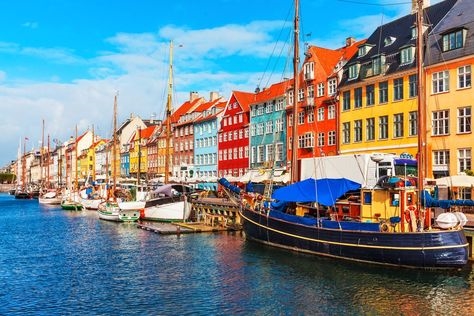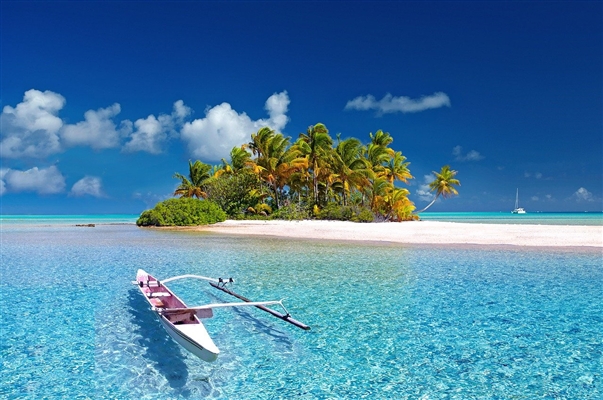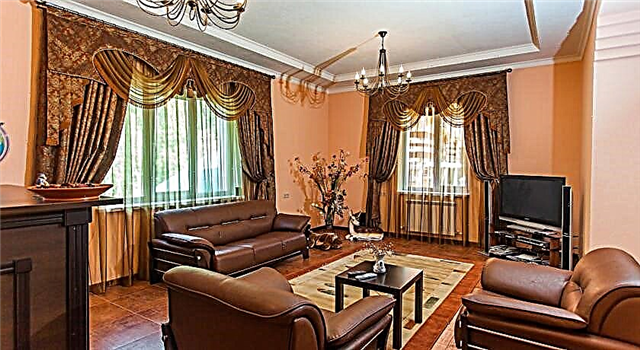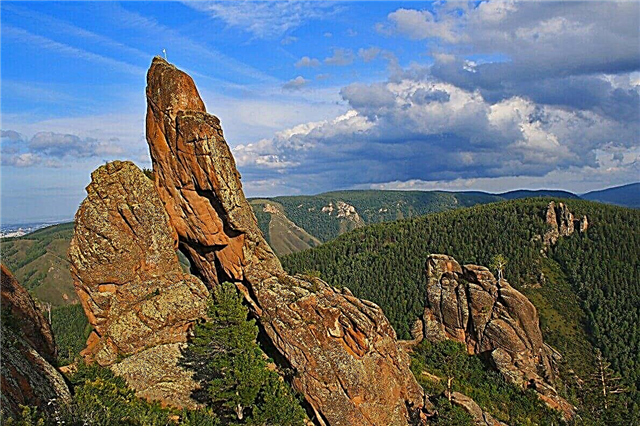Even residents of Russia will hardly be able to name about five to ten attractions of the Krasnoyarsk Territory. Meanwhile, in reality there are much more of them. The region is not considered as a tourist, but in vain. On its territory there are reserves, natural beauties, architectural monuments, museums and much more.
The specificity of the territory, weather conditions and national peculiarities made this area quite interesting for a long trip. Throughout the trip, regardless of tastes, the tourist will have something to do and see. Such a vacation can be especially valuable for families with children, since most of the region's objects are suitable for visits by the youngest explorers.
The most interesting and beautiful places in the region
List, photos with names and descriptions of the main attractions!
National Park "Krasnoyarsk Pillars"
Founded in 1925. The total area is over forty two thousand hectares. Most of the territory is covered with fir taiga. Also, two and a half hundred species of mosses and three times more vascular plants grow here. The fauna is typical for the taiga. There are representatives of the animal world listed in the Red Book. In the reserve, locals and tourists go for rock climbing and outdoor activities.

Zoo "Roev Ruchey"
Founded in 2000. The beginning of one of the largest zoos in the country was laid by an ordinary "living corner". The inhabitants of the park are almost seven thousand animals, fish and birds. The collection is replenished through purchase and exchange. The territory is divided into sections according to the species of the fauna. There are covered aviaries, aquariums, winter houses. Rare individuals may well coexist with specimens familiar to our perception.

Fan-park "Bobrovy Log"
Spread over an area of eighty hectares. The complex is completely dedicated to recreation and sports. At the same time, life does not stop here all year round. In summer: beach, carousels, picnics, horseback riding and more. In winter: downhill skiing, skating rink, walks among the snow-covered slopes. The downhill trails are suitable for both beginners and pros. Equipment can be rented. Nearby restaurants and cafes for every taste and budget.

Sayano-Shushenskaya HPP
Built in 1963 and gradually put into operation. The largest building of its kind in the country. Platinum, inextricably linked with the station, is a large-scale structure, which has few analogues in the world. The local natural conditions were ideal for the implementation of such a project. After the accident in 2009, the system of work at the hydroelectric power station changed, and some of the leading elements were repaired and replaced.

Great Arctic Reserve
Founded in 1993. The area is over four million hectares. The goal is to preserve rare species and their natural habitat. Lichens, fungi and higher plants are represented by dozens of species. Fauna representatives are mainly birds. There are fewer mammals - about twenty species. Along with the rest, polar bears, walruses, bearded seals, seals, ermines are found in the reserve.

Ergaki Natural Park
Founded in 2005. Its territory is divided into uneven areas: mountainous, flat, covered with glaciers, with dense undergrowth, without signs of vegetation, and others. Some of the peaks have received names, such as Dragon's Tooth or Parabola. One of the local attractions is the "hanging stone". It is worth looking for in the western part. The structure of "Ergaki" includes lakes Svetloye, Bolshoe Bezrybe and others.

Historical and Ethnographic Museum "Shushenskoye"
Founded in 1930. An open-air complex is located on an area of sixteen hectares. The main theme is a Russian village at the turn of the 19th and 20th centuries. A full-fledged settlement has been recreated, and some of the houses are originals. The funds of the museum are vast. The impressive area and exposition are not able to accommodate them. You can look around both as part of the excursion and on your own. Themed events are held on the territory of Shushenskoye.

Shalobolinskaya scribble
It is located on the right bank of the Tuba. This is a rock art monument. Some of the drawings are in alder, others are embossed or scrawled. The images are of different ages, some date back to the very beginning of our era. The symbols on the rocks are both barely distinguishable and not entirely legible, and incredibly clear, as if they were made quite recently. Interestingly, in some areas of the writing, there is a combination of styles and techniques.

Permafrost Museum
Founded in 1965. The complex is located in the small town of Igarka. In the permafrost soil under the museum there is a dungeon, which is also part of the exposition. In addition to the descent into the tunnels, where the temperature remains unchanged around -5 ° C, tourists are interested in other thematic exhibitions. One of them is devoted to repression, the other - to the construction of the local railway, the third - to the animal world, and so on.

Chapel of Paraskeva Friday
Built in the 50s of the XIX century on the site of a temple. Several times in its history, it has undergone reconstruction and repairs of varying complexity. The details of the decoration and even the cross were changed. Already in the modern period, the territory was ennobled around. A burial was found nearby - probably representatives of a noble family. The image of the chapel fell on a ten-ruble bill issued in 1997.

Holy Protection Cathedral
Founded in the 18th century. It is an architectural monument. Built in the Siberian Baroque style. It was rebuilt many times, supplemented with details of decoration, or, on the contrary, lost the usual elements, the color of both the walls and the roof also changed. During the last restoration in 2012, the look was returned to its original version. The current object of the Orthodox Church. Belongs to the Krasnoyarsk diocese.

Cultural and Historical Center "Uspensky"
Opened in 2016. The complex was built to preserve traditional national cultural characteristics. On its basis there are circles and clubs of interest. There is a pottery workshop, a class of weaving, embroidery, arts and crafts, and so on. Seminars are held in the lecture halls, small halls host events related to folk art. You can also learn how to use bell ringing right there.

Museum-steamer "St. Nicholas"
Built in 1886. It was actively used, including for the transportation of the future Emperor Nicholas II and as a barge, until 1960. Ten years later, the steamer was returned from the ship cemetery and restored, being converted into a museum. The ship is at the pier and receives visitors. The exhibition inside is dedicated to memorable events connected in one way or another with the adventures of St. Nicholas.
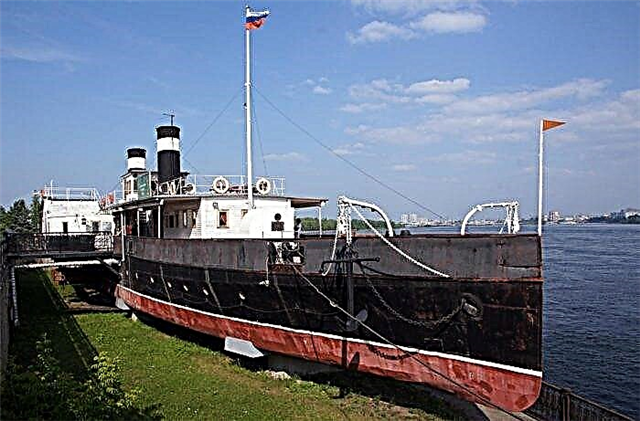
Art Museum named after V.I.Surikov
Founded in 1957. The exposition is divided into three parts and is based in different buildings. There are also three departments: Russian art in two periods and arts and crafts. The funds are vast and do not fit into the exposition. The museum collection is the largest in our country beyond the Urals. The painter Surikov was honored with a personalized museum. It is opened in his old house and is dedicated to the life of the master. The manor has been preserved since 1930 and is well maintained.

Museum Center "Peace Square"
Opened in 1987. It is used as a platform for exhibitions of contemporary art and not only. The museum arranges installations and launches projects dedicated to important events and dates. Funds are gradually being raised. Expositions often replace each other. An educational center operates on the basis of the "Peace Square". Modern equipment, large screens and more are installed inside.

Communal bridge over the Yenisei
Built in 1961. An example of the Stalinist Empire style.His image appeared on a ten-ruble bill issued in 1997. The length is two thousand three hundred meters. Built across the Yenisei River. It connects two districts of the city of Krasnoyarsk. The road surface consists of six lanes. To increase the cross-country ability, the tram tracks were dismantled.

Ob-Yenisei Canal
Built at the end of the 19th century. Also got into the territory of the Tomsk region. It was navigable and connected the basins of two rivers. At the moment, the territory is sparsely populated, and the channel itself is not used for its intended purpose. It does not manage to become completely abandoned, as tourists and local lovers of river rafting live here all the time. It is not planned to restore the channel to its previous form.

Tunguska reserve
Opened in 1995. Twenty thousand hectares is a protected zone, the territory is ten times larger - the total area of the reserve. The forest covers most of the area, and about twenty percent is covered by swamps. Animals are diverse and accustomed to surviving in harsh conditions, to temperature changes. The fauna is represented by: brown bear, sable, squirrel, elk and other animals.

Lake Taimyr
Located on the peninsula of the same name. The northernmost natural lake of all lakes on the planet. For almost half a year the lake is covered with an ice crust. Around the tundra and permafrost. Life here is largely dictated by the season: the warmer, the more active everything around becomes. This concerns the migration of animals even within the region, moving to areas where it is warmer.

Krasnoyarsk Museum of Local Lore
Founded in 1889. The museum building looks like an ancient Greek temple. Previously rebuilt. In 2013, it was returned to its original appearance. There are more than half a million exhibits in the museum's depositories. The collection includes art objects, archaeological finds, numismatic treasures, ancient documents and more. Tours are conducted in several languages, their goal is to convey the history of the region to tourists.

Annunciation Church
Built at the very beginning of the 19th century. Became the first church in Krasnoyarsk. Initially, another wooden church was simply moved to this place. As soon as someone took over the building of patronage, a new extension or additional building appeared nearby. Already in the modern period, reconstruction was carried out, removing all unnecessary and transferring the diocese for use in its original form.

Bolshaya Oreshnaya cave
The length is fifty-eight thousand meters. The largest known conglomerate in the world. Exploration of the cave began in 1964 and continues to this day. The temperature inside is always the same - +4 ° C. It is impossible to understand the intricacies of some tunnels without equipment and experience. Sometimes collapses occur, new routes of communication are formed.

Recommended: 30 interesting natural monuments of the Krasnoyarsk Territory.
Putorana plateau
On this territory there is a UNESCO protected nature reserve. Since the plateau is located on the border of the belts, you can find animals and plants nearby, clearly preferring different climatic conditions and everything else. There can be a couple of steps from the tundra to the taiga. The picturesque Lama Lake is part of the plateau ecosystem. Lynxes, wood grouses, bighorn sheep and other fauna live nearby.

Birch and ant grove
It is located near a village called Ploskoye. The grove occupies about three hundred meters. It is planted mostly with birches, and there are many anthills nearby. Most are small, even inconspicuous, and some reach a height of two meters. The grove received the status of a natural monument twenty years ago. It is protected not only by the state, but also by local residents.

Tatyshev Island
It is located on the Yenisei River and is the largest. The island has become a place of leisure and active recreation for citizens and tourists. This green area invites you to bike rides in summer, while in winter everything is covered with snow and you can ski on numerous trails. The flora and fauna are typical of the region. One of the entertainments of those who come here is to feed small wild animals or birds.




